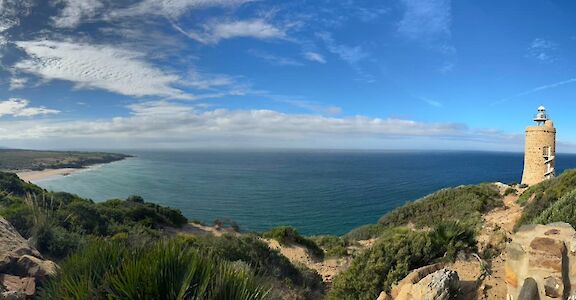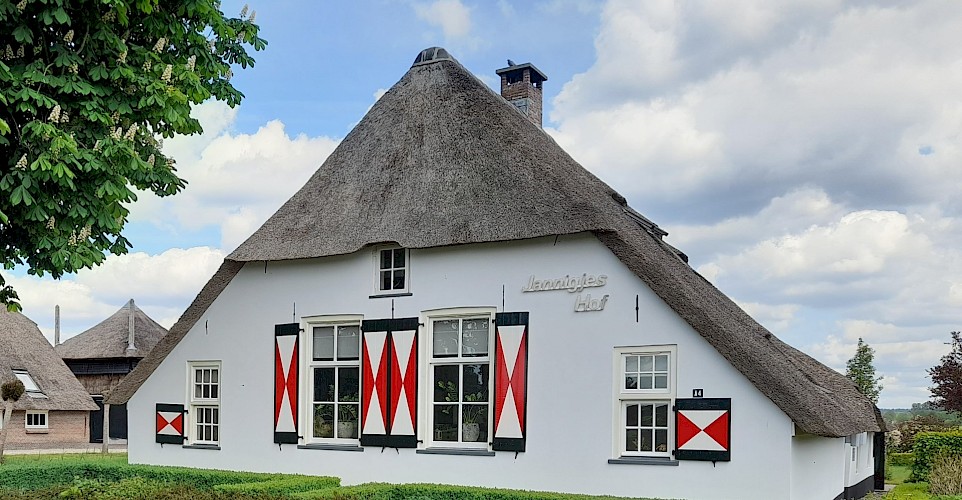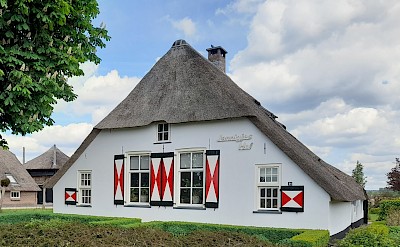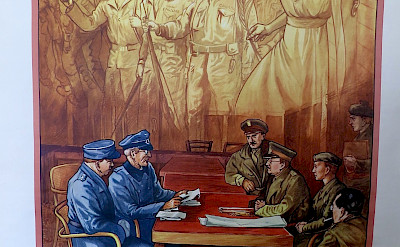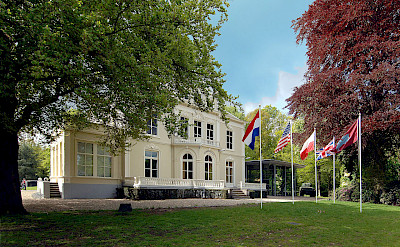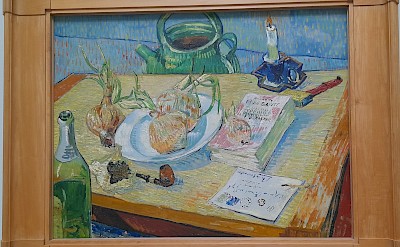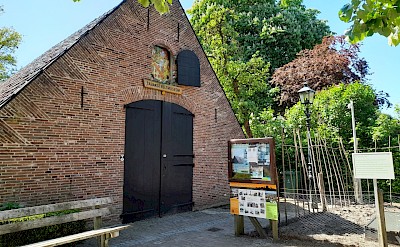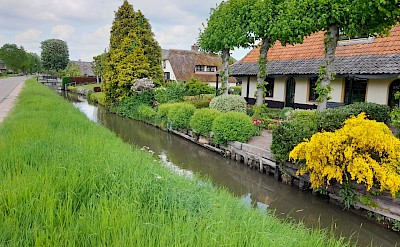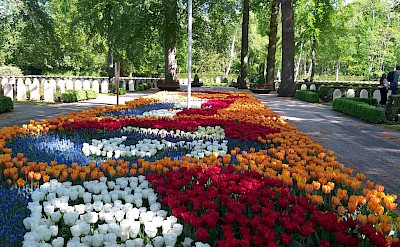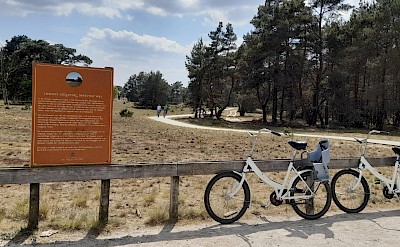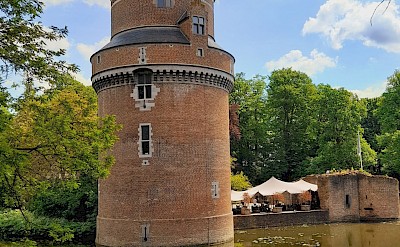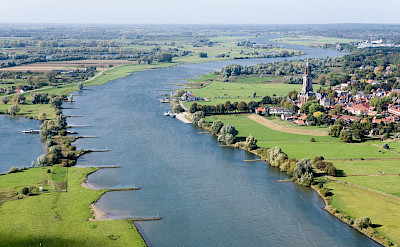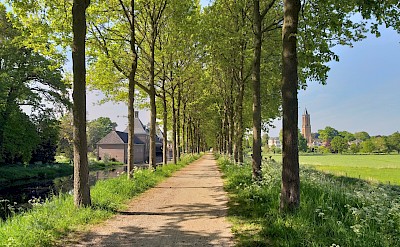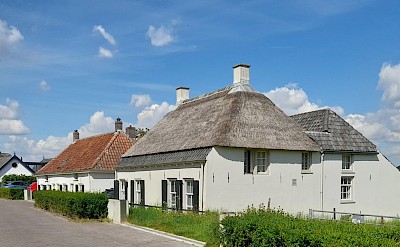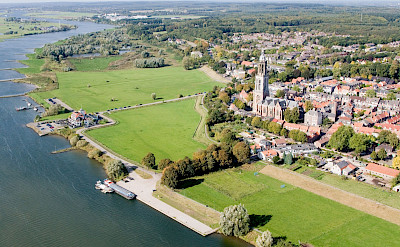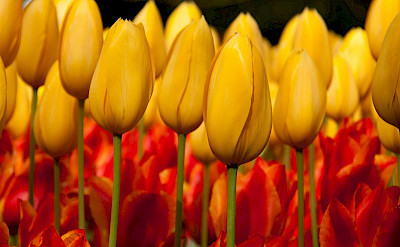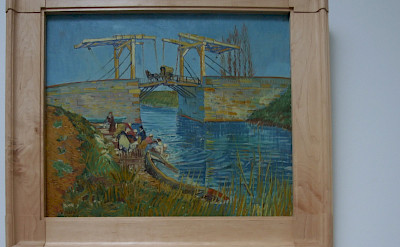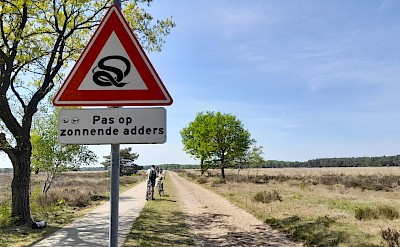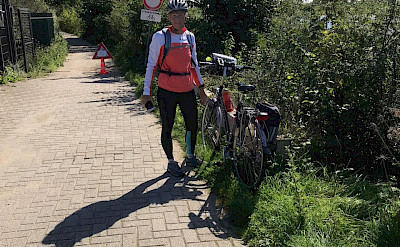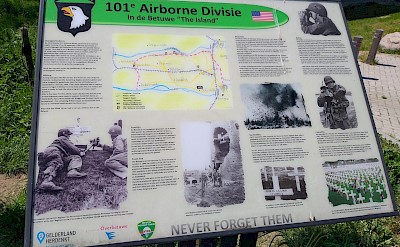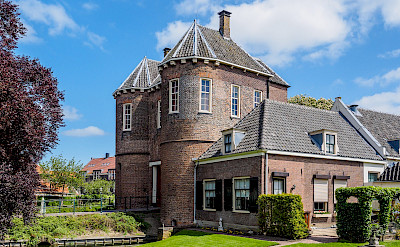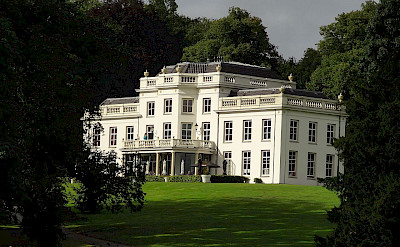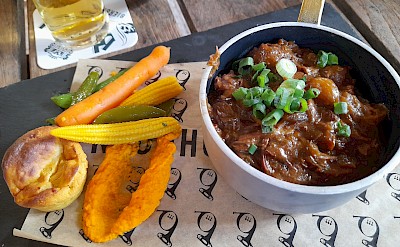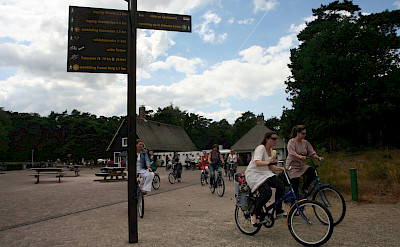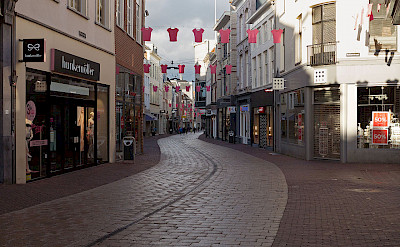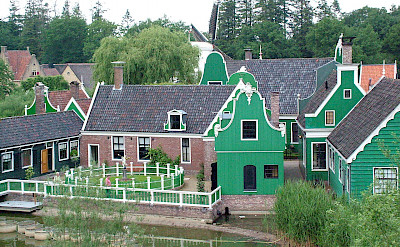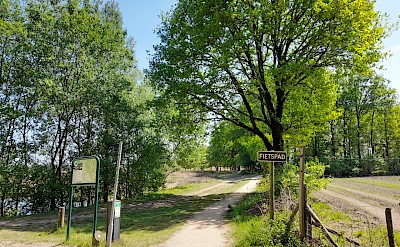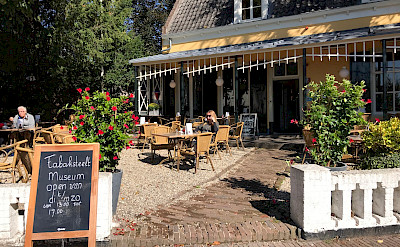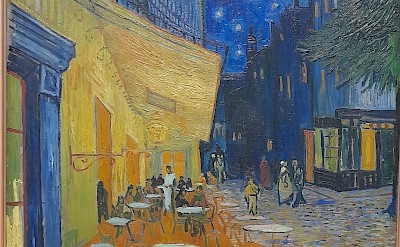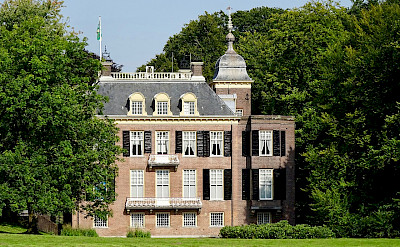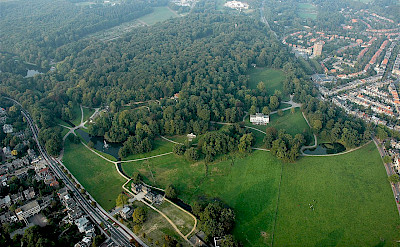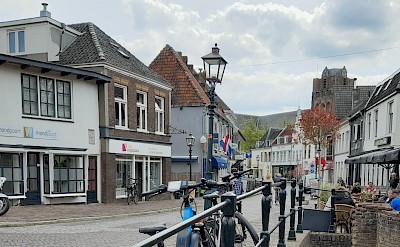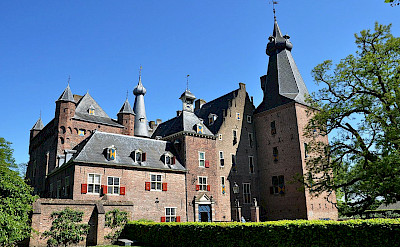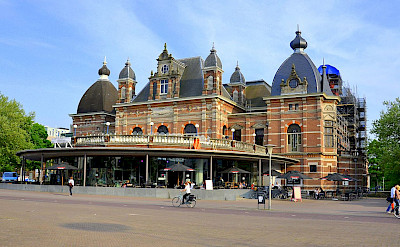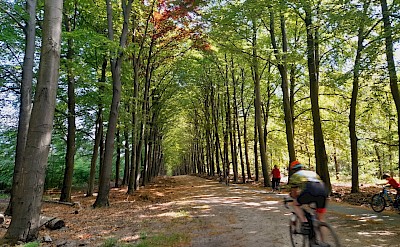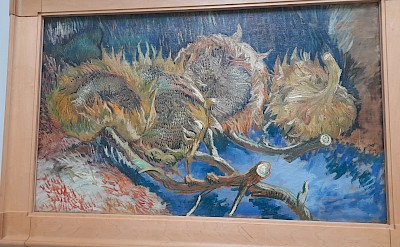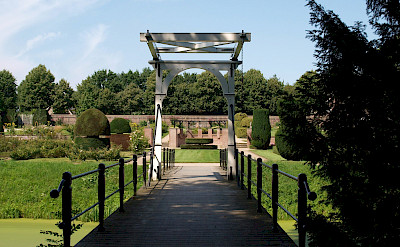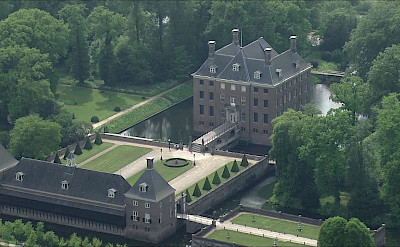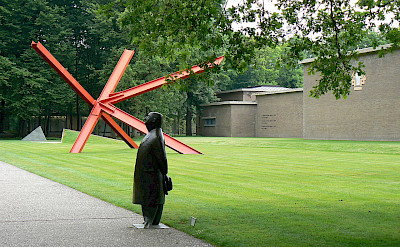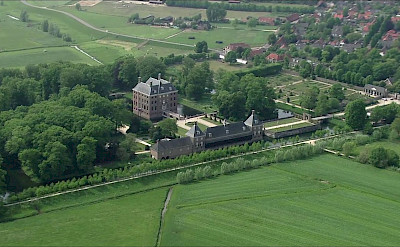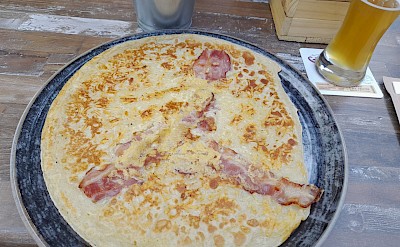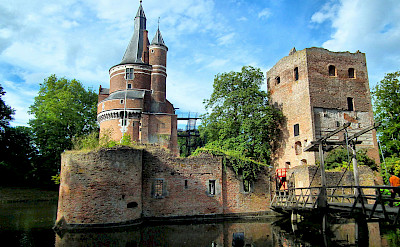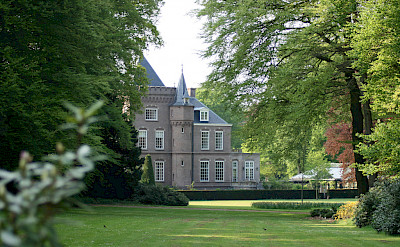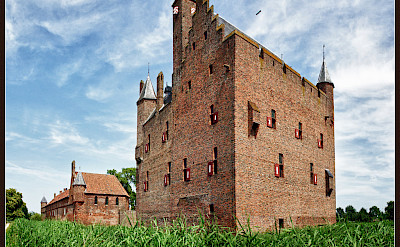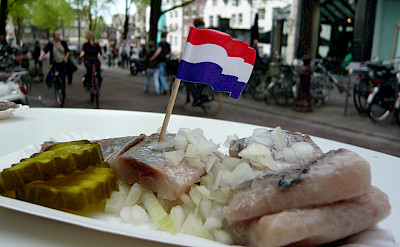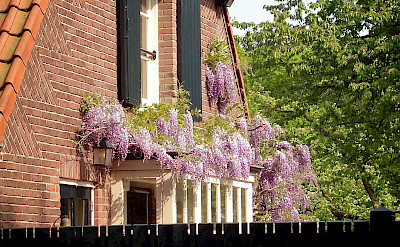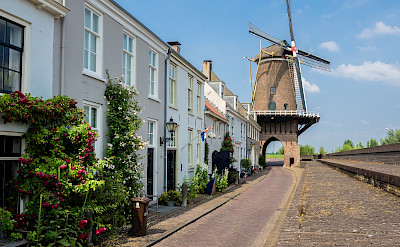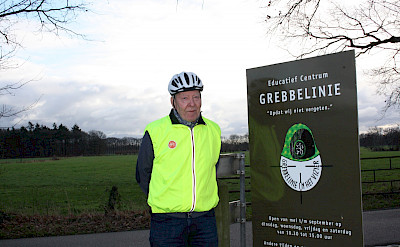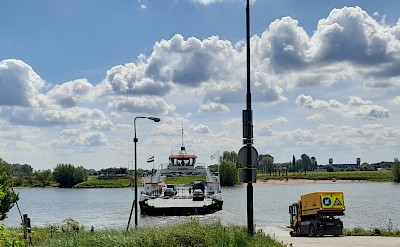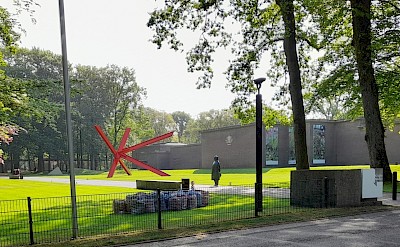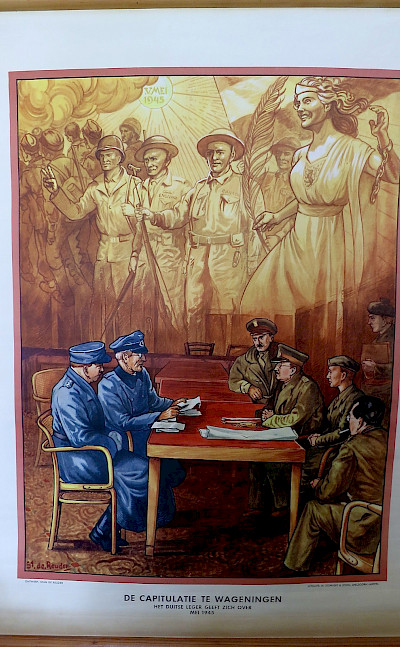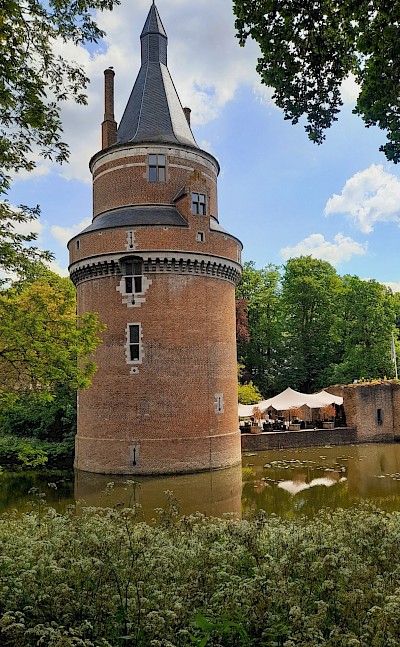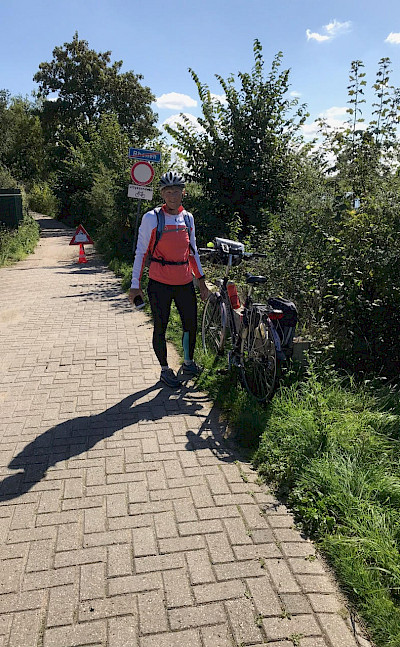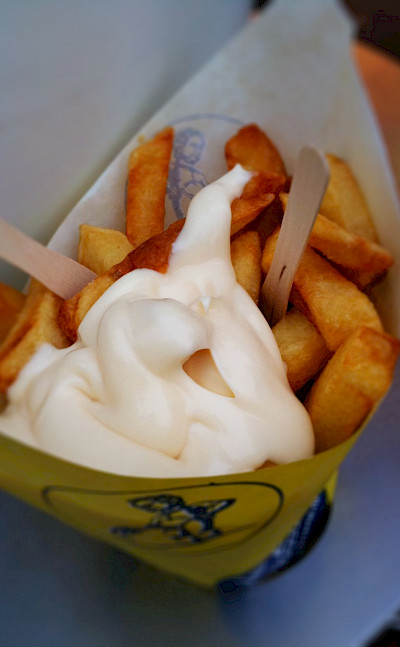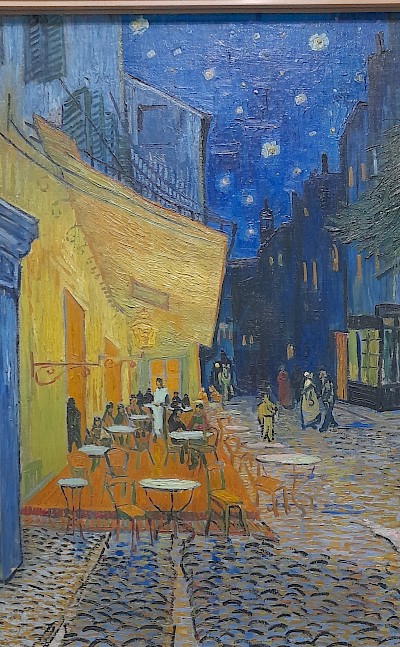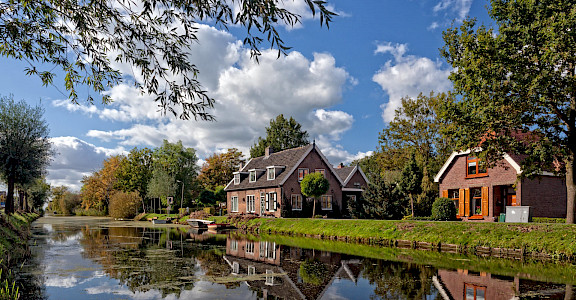-
Overview
This is a World War II-themed bike tour in Holland, designed by Tripsite, to help you understand more of the country we hold dear.
In the West, we see history from one perspective, our own. In Europe, and, specifically for this tour, in Holland, there is a different lens one must look through.
The tour begins near the area where the Germans first invaded Holland and finishes in the area of Operation Market Garden. Though the German occupation would last another year, Operation Market Garden was the beginning of the long end.
Accompanied by your tour guide, a native of Holland and a specialist in WW II history, you will hear about Holland's story through this dark time. As you cycle present-day Holland, it is hard to imagine this lovely landscape transformed by war, invasion, occupation, and starvation. But remember, we must never forget. Learn the story of the road to liberation.
This tour is offered as a 5-day or 9-day itinerary.
Highlights
- Guiding by a local Dutch expert in WW II history
- Airborne Museum Hartenstein
- Airborne Museum at the Bridge in Arnhem
- Other memorials, monuments, and cemeteries
- National Park De Hoge Veluwe
- Kroller-Muller Museum
- Cycling the vast Dutch cycling infrastructure
- Unique accommodations
Get to know your guide:
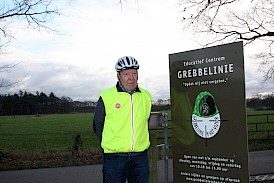
Martin Wigtman, teacher and engineer by trade, and now a WW II history buff by choice, will be your guide. Born in 1949 in Soest, on a farm west of the Grebbe Line, Martin's father was active in the war, but like so many of that generation, did not speak about it. Martin has researched his father's involvement and others and delved into the history of the region through archives and archaeology. He now lives in the town of Scherpenzeel, once the most war-torn town in the Netherlands, and regularly gives lectures, guides tours, and volunteers at a local museum that he helped establish.
If World War history is not your thing, see a complete list of our bike tours in the Netherlands. We offer something for everyone.
-
Itinerary
Thank you for your patience as we make changes to the itinerary to make this tour even better. You will note that some daily distances have not been finalized but we are working hard to perfect the routes so that the history of the great war can be showcased in more detail.
Please do not hesitate to contact us with any interest or questions you may have and we will be sure to present the revised itinerary to you.
Day 1: Amerongen
Day 2: Grebbe Line and New Dutch Water Line, 32 mi. (51 km)
Day 3: Wageningen Route, 26 mi. (42 km)
Day 4: Rhine Route, 25 mi. (40 km)
Day 5: Transfer to Oosterbeek. Check in to Hotel.
Day 6: Airborne Route, Arnhem, 31 mi. (49 km)
Day 7: Arnhem IJssel Line, 31 mi. (50 km)
Day 8: Option 1: The Betuwe, 31 mi. (50 km)
Option 2: Hoge Veluwe National Park, 22 mi. (35 km)
Day 9: Departure or extension of stayAll distances are approximate. Due to unforeseen circumstances such as weather conditions or provisions issued by local authorities, the itinerary may be subject to some changes before and/or during your holiday. For example, along the route, you may find temporary deviations/detours necessary due to roadwork that will not be reflected on your maps or route descriptions. In this case, please follow the directions posted locally.
Day 1: Amerongen
Arrive and settle into your accommodations at the Napoleon Schuur, located in the historic center of Amerongen. Plan on strolling this quaint village and visiting the Amerongen castle here. Hours are 11 - 4 during peak season. Please note that the castle is closed on Monday, Tuesdays, and Wednesdays. If you cannot visit the castle on this day, you will have another opportunity on Day 5, before your transfer to Oosterbeek.Accommodation: Napoleon Schuur
Day 2: Grebbe Line and New Dutch Water Line, 32 mi. (51 km)
This route mainly covers an area where heavy battles were fought at the beginning of WWII. Along with your guide, you will cycle along the Grebbe Line, first established in 1745 as a line of defense against invading armies. The Grebbeline had been largely constructed behind vast inundations, after which a front line lay that was composed of classic trench works. If an invasion was imminent, parts of the area between Spakenburg and the Grebbeberg were to be flooded, providing a natural barrier between the attackers and the Dutch defense. In 1936, as rumors of the German war machine spread, plans were made to update and reinforce the Grebbe Line. History tells the story. When the Germans invaded, the reinforcements had not been completed and it was simply too vulnerable to modern artillery and bombs to withstand a protracted siege. When the Grebbe line failed the soldiers retreated to the New Dutch Water Line, another line of water defense. Hitler thought that Holland would fall in a day, but the struggle lasted five. Holland was forced into surrender by the aerial bombing of Rotterdam, and the threat of the same for Utrecht and Amsterdam.Accommodation: Napoleon Schuur
Day 3: Wageningen Route, 26 mi. (42 km)
As your journey into history progresses, you continue to enjoy present-day Holland!Amerongen, where you will be based for the first part of your tour is a little paradise of tranquility, tucked away in a pristine national reserve. You will be cycling on a wonderful cycling network, through small cities, towns, and bergs. There are cyclists everywhere, the Dutch, living their lives, going to school, tending their gardens, shopping, having a coffee in the square. It is a very peaceful and safe environment. This is the other Holland, apart from Amsterdam.
Now go back in time.
The government of Holland estimated that the Grebbe Line would be completed in November 1940 and in May of 1940 the bomb-proof pumping station at the Grebbeberg, necessary for the control of local flooding, had not been completed. The Grebbeberg was a vulnerable spot in the Grebbe Line.
Today as you continue to cycle with your guide and learn, you will visit Rhenen, strategically important because it is located near the Grebbe Line and the Grebbeberg. In May of 1940 when the German troops broke through, the entire town was evacuated. Upon returning to their town, the citizens found that many of their homes were destroyed or heavily damaged. Incredibly, the Cunera Church and its tower remained largely untouched. In 1945, the town was damaged again during the liberation of the country from German occupation. Many or all of the Dutch soldiers who were killed by the Germans near Rhenen lie buried in the Cemetery of Honor.
Wageningen will be another highlight in your journey through history. Today the city is known for its world-renowned agricultural university and is part of the "food valley", one of the largest food communities in the world, consisting of more than 1,510 international food companies and 20 research institutes. Wageningen University and Research (WUR) has been named the best global university for agricultural sciences according to U.S. News & World Report, 2016.The people, city, and institutions of Wageningen suffered greatly during World War II. In 1944, a pocket of Dutch Resistance was found here and arrested. Many of the accused were sent to death camps. Among those arrested were the twin sisters Eltien and Neeltje Krijthe, engineers at agricultural college. In 1942 until they were discovered in 1944, they housed two Jewish refugees, a brother, and a sister. Eltien died at Ravensbrück in 1945. Neeltje managed to survive seven successive camps.
After almost five years of German occupation, on May 4, 1945, on the west side of Wageningen, allied forces led by Canada and the German military, negotiated the way the German soldiers discussed conditions of surrender. The talks continued the next day at the Hotel de Wereld, near the center of the city. The final agreement was signed on May 5, 1945, in de Aula, an auditorium of the Agricultural College, next to de Wereld Hotel. This agreement was known as Dutch Capitulation Act.
Accommodation: Napoleon Schuur
Day 4: Rhine Route, 25 mi. (40 km)
Today could be called the Castle Route as you will cycle an area that is dotted with mansions and estate houses. In a relatively small area there are 6 castles, some of which have a war history. You will also pass through Wijk bij Duurstede (more than 1000 years old) and then crossing the river, travel about 9 km through the Betuwe, a region that will be discussed in more detail on Day 8. You come across an old brick factory where tragically a large number of civilians were killed by an Allied bombardment. This day is scheduled without a tour guide. You may request to be guided (supplement will apply).Accommodation: Napoleon Schuur
Day 5: Transfer to Oosterbeek. Check in to your hotel
The town of Oosterbeek is ideally located to continue your historical journey. Located on the outskirts of Arnhem, this area was badly hit during WWII. It was here that Operation Market Garden unfolded. The transfer is 35 km and takes just over 30 minutesDay 6: Airborne Route, Arnhem, 31 mi. (49 km)
Leaving Oosterbeek with your guide, the route leads first through the landing area of the allied paratroopers and subsequent fighting which encompassed the city of Arnhem, the town of Oosterbeek, and the villages of Wolfheze and Driel. A visit to the Glider Museum in Wolfheze is possible, a small private museum holding many WW II glider relics. You then pedal through a beautiful nature reserve on excellent cycle paths. The route runs for the most part through the area of Operation Market Garden. Operation Market Garden was one of the biggest Allied operations in WWII and occurred in September 1944. The operation aimed to conquer the bridges across the Meuse, Waal, and Rhine Rivers in Holland. This would allow Allied troops to avoid the Siegfried line, a defense line running from Switzerland to Kleve. It was hoped that a quick advance to the Ruhr area and Berlin would put an end to the war around Christmas. The bridges in Eindhoven and Nijmegen were captured intact by the Allies but the last bridge, the bridge "too far" was not. You will cycle over this bridge and can visit the little museum here. Though small, it is very informative, providing information about Arnhem, the bridge, the battles, and the people. The loss was great, a devastating blow to the success of Operation Market Garden and at the expense of many precious lives but it is also a testament to the bravery of the men involved.As you bike, you will come across memorials in various places. The route passes the Airborne War Cemetery and the Airborne Museum Hartenstein, highlighting your journey through history.
Day 7: Arnhem IJssel Line, 31 mi. (50 km)
Today, you pedal through the area of the advancing allies towards Arnhem. The route passes the huge German bunker, Diogenes, from which the German air defense was led. Near the bunker is the former German airport with a museum. You will cycle through Veluwzoom National Park, a national park chock full of nature, forests, hills, sand dunes, and heather fields with gorgeous views. This day is scheduled with a guide.Day 8: Water as a weapon or Hoge Veluwe National Park
You have two options today. Please note that this day is scheduled as self-guided. If you would like to request a guide, especially if opting to cycle Option 1, a supplement will apply.Option 1: The Betuwe, 31 mi. (50 km)
The majority of this route leads to the south of Arnhem, through the Betuwe, a region of historical, geographical, and agricultural importance that suffered greatly during WWII. It is located in the delta formed by the waters of the Rhine and Waal Rivers, this fertile region, the food valley, is known for its fruit orchards and rich soil. In 1944, this area became the boundary between Allied and German territory and became known as "Men's Island" or "Manneneiland" due to the evacuation of all the women and children, leaving only the men behind. Heavy rain, flooding, and constant shelling turned the area into a no-man's land and fighting to hold the "island" as the allies called it, was fierce. After sustaining appalling losses in the face of the determined resistance, the German Army finally abandoned all hope of ever retaking the area but not before destroying dikes and flooding the region. The Betuwe would be liberated in April 1945, just weeks before the German surrender. What was left behind was flooded land, damaged or destroyed homes, and loved ones lost.Option 2: Hoge Veluwe National Park (Nationaal Park De Hoge Veluwe), 22 mi. (35 km)
The park occupies an area of 13,750 acres, is the largest continuous nature reserve in the country, and is notable for its diversity of scenery, from dense forests to high dunes. It is home to abundant wildlife, including deer, wild boar, and mouflon. It's also an important bird sanctuary and has long been a popular destination for bird watchers. Hoge Veluwe National Park is predominantly flat as with so much of the Netherlands, making touring by bike one of the best ways to enjoy its magnificent scenery. This park was originally owned by the Kröller-Müller family and a stop at their main residence, St. Hubertus, a magnificent mansion, completed in 1923, will be noteworthy. To visit the interior, a guided tour must be booked. The other highlight of this park is the Kröller-Müller Museum and Sculpture Garden, which houses an amazing collection of paintings, drawings, and sculptures. There are 280 paintings and drawings by Vincent Van Gogh alone. To enter the park, you must pay an entrance fee and it is highly recommended to include a visit to the museum. It is a must-see!Day 9: Departure or extension
Day 1: Arrival in Oosterbeek. Check in to Hotel.
Day 2: Airborne Route, Arnhem, 31 mi. (49 km)
Day 3: Arnhem IJssel Line, 31 mi. (50 km)
Day 4: Option 1: The Betuwe, 31 mi. (50 km)
Option 2: Hoge Veluwe National Park, 22 mi. (35 km)
Day 5: Departure or extension of stayLooking for a tour other than Holland? View all our featured bicycle tours, specials, & news or look at our full list of tours & trips in Europe.
-
Map
-
Accommodation
For the 9-day tour, you will be based in two towns on this tour. First, you will be accommodated for 4 nights in the Napoleon Schuur, next to the entrance of the National Park Utrechtse Heuvelrug in Amerongen. On Day 5, you will be transferred to Oosterbeek where you will continue your tour based in Hotel de Oude Herberg, located near Arnhem.
For the 5-day tour, you will be accommodated at the Hotel de Oude Herberg in Oosterbeek. -
Inclusions
What’s Included
9 day tour
- Accommodation for 8 nights
- 8 breakfasts
- Guide on first cycling day
- Transfer on day 5 from Amerongen to Oosterbeek
- Electric bike rental with basket (3-day bike rental in Amerongen and 4-day bike rental in Oosterbeek)
- GPS tracks in either GPX or KLM format (excluding the Veluwe Nat. Park routes). Please bring a handlebar holder for your device for the bike (you will be glad you did)
- Tourist taxes
- Accommodation for 4 nights
- 4 breakfasts
- Guide on first cycling day
- 4-day electric bike rental in Oosterbeek
- GPS tracks in either GPX or KLM format (excluding the Veluwe Nat. Park routes). Please bring a handlebar holder for your device for the bike (you will be glad you did)
- Tourist taxes
5 day tour
What’s Not Included
- Lunches & dinners
- Entrance fee for De Hoge Veluwe National Park - approx. €11.50 (museum visit is not included)
- Entrance fee for other museums if applicable
- Gratuities for your guide + taxi
- Bike Protection
- Travel Insurance
-
Dates & Pricing
Dates & Pricing
Questions about dates or pricing? We’re here to help! Call 800-951-4384 to talk to a Tour Specialist now.
Apr 1–30 (Daily)Apr 1–30 (Daily) 5 day Tour € 794 Book Apr 1–30 (Daily)Apr 1–30 (Daily) 9 Day Tour € 1371 Book May 1–31 (Daily)May 1–31 (Daily) 5 day Tour € 794 Book May 1–31 (Daily)May 1–31 (Daily) 9 Day Tour € 1371 Book Jun 1–30 (Daily)Jun 1–30 (Daily) 5 day Tour € 794 Book Jun 1–30 (Daily)Jun 1–30 (Daily) 9 Day Tour € 1371 Book Jul 1–31 (Daily)Jul 1–31 (Daily) 5 day Tour € 794 Book Jul 1–31 (Daily)Jul 1–31 (Daily) 9 Day Tour € 1371 Book Aug 1–31 (Daily)Aug 1–31 (Daily) 5 day Tour € 794 Book Aug 1–31 (Daily)Aug 1–31 (Daily) 9 Day Tour € 1371 Book Sep 1–30 (Daily)Sep 1–30 (Daily) 5 day Tour € 794 Book Sep 1–30 (Daily)Sep 1–30 (Daily) 9 Day Tour € 1371 Book Oct 1–31 (Daily)Oct 1–31 (Daily) 5 day Tour € 794 Book Oct 1–31 (Daily)Oct 1–31 (Daily) 9 Day Tour € 1371 Book Show pricing details and extra options →
Pricing details and extra options
5 day Tour: Daily Apr 1–Oct 31
9 Day Tour: Daily Apr 1–Oct 31- 5 day Tour 2025 Daily Apr 1–Oct 31 from € 7942025 departures: Daily Apr 1–Oct 31
2025 April Sun Mon Tue Wed Thu Fri Sat 2025 May Sun Mon Tue Wed Thu Fri Sat 2025 June Sun Mon Tue Wed Thu Fri Sat 2025 July Sun Mon Tue Wed Thu Fri Sat 2025 August Sun Mon Tue Wed Thu Fri Sat 2025 September Sun Mon Tue Wed Thu Fri Sat 2025 October Sun Mon Tue Wed Thu Fri Sat Tour Package Double occupancy € 794 Single occupancy On request - 9 Day Tour 2025 Daily Apr 1–Oct 31 from € 13712025 departures: Daily Apr 1–Oct 31
2025 April Sun Mon Tue Wed Thu Fri Sat 2025 May Sun Mon Tue Wed Thu Fri Sat 2025 June Sun Mon Tue Wed Thu Fri Sat 2025 July Sun Mon Tue Wed Thu Fri Sat 2025 August Sun Mon Tue Wed Thu Fri Sat 2025 September Sun Mon Tue Wed Thu Fri Sat 2025 October Sun Mon Tue Wed Thu Fri Sat Tour Package Double occupancy € 1371 Single occupancy On request
Please Note
- Rates are per person, based on double occupancy
- Tour prices are based on the fuel costs at time prices are set, often months or years in advance. In rare cases, additional fees may apply for fuel cost increases.
- Information to read before you book
- We recommend purchasing trip insurance
- Please see our FAQ
- 5 day Tour 2025 Daily Apr 1–Oct 31 from € 794
-
Extra Info
Skill Level — Easy
This is a 9-day or 5-day partially guided tour, which includes electric bike rental. Your tour can be as easy or as difficult as you would like depending on the level of assistance you utilize. Throughout this beautiful, relatively undiscovered part of Holland, you will cycle on the well-maintained Dutch cycling network and quiet country roads. Entering and exiting any town is either done on separate bike lanes or well-marked lanes.
Airport Info
Fly to Amsterdam Schiphol International Airport
Local Travel
9 day tour
You can take an intercity train from the airport in the direction of Nijmegen. Exit train at Station Driebergen-Zeist. Travel time approx. 47 minutes. From this station, you walk 3 minutes to the bus station and take local bus 50 from platform F in the direction of Wageningen. Travel time is approx. 27 minutes. Exit bus at Amerongse Berg in Amerongen. The hotel is a two-minute walk from the bus station. The total cost of the train plus bus is approx. €14. At the end of your tour, you will take a short taxi to the train station in Oosterbeek. From there, you can take a direct train to the airport or elsewhere.
5 day tour
You can take an intercity train from the airport to Oosterbeek. Travel time varies from 1 1/2 hour to 1 3/4 hours with change of trains involved.Climate
Best time of year to enjoy this tour is spring, summer, or fall. The Netherlands has a temperate maritime climate influenced by the North Sea and Atlantic Ocean, with cool summers and moderate winters. Always check local conditions before you travel.
Remarks
If you would like the guide for two days instead of three days, please ask us. A discount applies.
Important to know
Travel Documents
It is each traveler's responsibility to ensure that you are in compliance with the country or countries you plan to visit. This includes and is not limited to passport validity, visa requirements and acquisition, blank passport pages required for your destination (s), etc.
US citizens: A good website to research the requirements of the Schengen Agreement and entry into other countries is travel.state.gov.
Non-EU and EU residents: Please research the requirements of your country of residence for international travel and your destination country or countries.
*Important note: Please check on the European Travel Information and Authorization System (ETIAS) status as once implemented, this will be required to visit any of the 26 Schengen-member countries for tourism, business, medical, or transit. This is an additional check on security rather than a visaTour Operator
This tour is run by Tripsite.
We value the strong relationship we have with our local partners and the services we provide.
We are not a broker.
We do not inflate tour prices.
We are simply travelers helping travelers.Would you like to learn more About Us? How about What Makes Us Different than other companies?
-
Photos
-
Reviews
Reviews
Ionuț Cristian P.
July 24, 2023Verified Reviewer
Don Mankin
November 5, 2021Verified Reviewer
Tripsite Customer Reviews
Ionuț Cristian P.
2 years ago
Verified Reviewer
Don Mankin
3 years ago
Verified Reviewer

